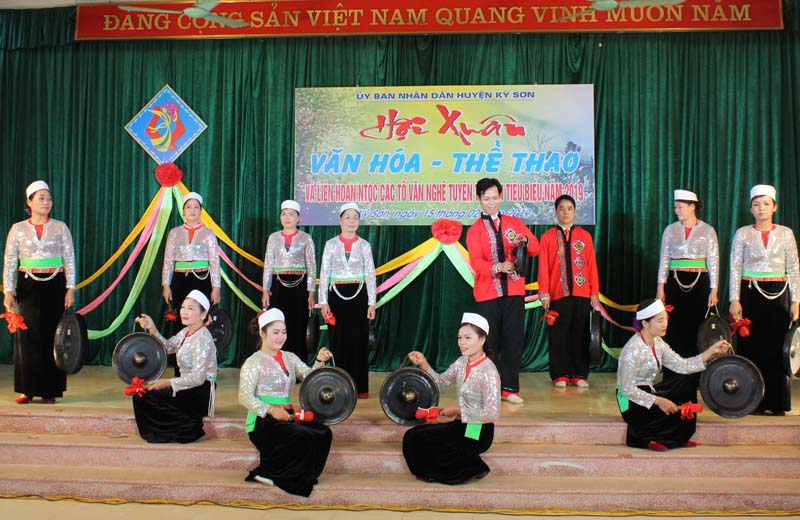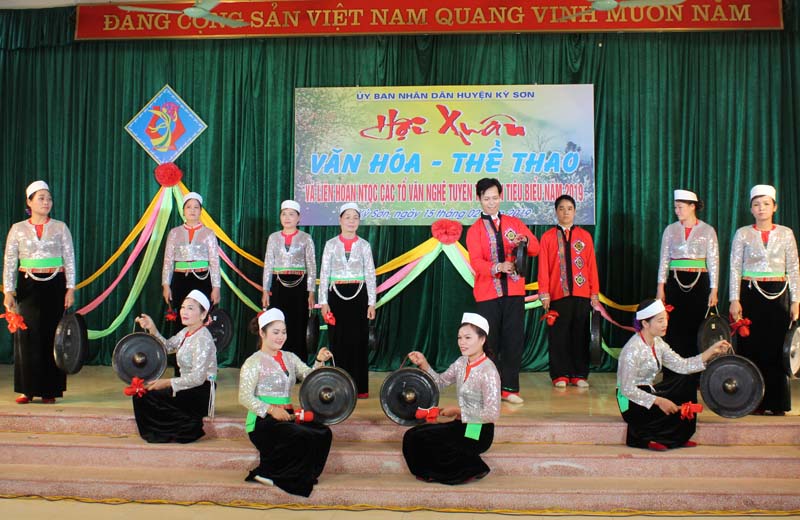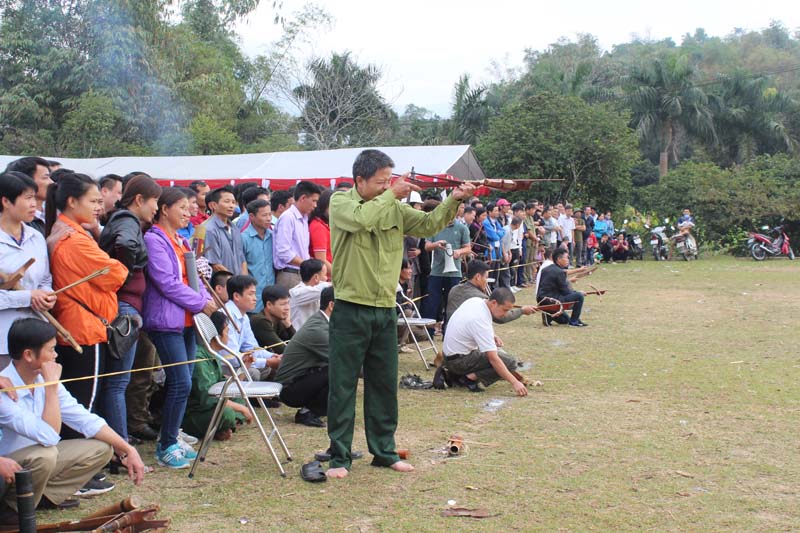
(HBO) - On February 15, in Mong Hoa commune (Ky Son district), Ky Son district People's Committee held a Spring Festival of Culture - Sports and a public art festival in Ky Son district in the year of Pig 2019. Ten delegations with more than three hundred actors, athletes and artisans took part in the festival.

The excellent gong performance of the Mong Hoa commune team.
This is an activity organized annually by the Ky Son District People's
Committee in the early spring to honor, preserve and promote the cultural
identities of the ethnic minorities in the district. The contents of the
activities in the Spring Festival have created the opportunities for the
cultural nucleus to exchange and convey the cultural values in the public
community and strengthened the national great unity. At the same time, the
development and quality of cultural and artistic movements at all levels,
especially the cultural and propaganda groups in villages, hamlets and
residential areas have been accessed.

The athletes are competing in the crossbow shooting.
There are three main contents were organized in this year's Spring Festival
of Pig. They are public art festival, Chung cake competition and buffalo
braided ropes and playing national sports (crossbow shooting and tug of war).
In addition, there were also booths to display and sell the local products and
cuisine in the Spring Festival.
After a day with a joyful, happy and exciting atmosphere, the Spring
Festival of Culture - Sports and the Ky Son District’s Art Festival were
greatly successful. In particular, the "Public Art Festival" contest
with well-trained and elaborate performances, deeply imbued with great cultural
identities of the ethnic minorities has made a good impression.
Hoa Binh province has carried out multiple programmes and initiatives to revive its cultural heritage which has gradually fallen into oblivion through the ebbs and flows of history.
The most prominent and defining feature in the prehistoric era of Hoa Binh is the Hoa Binh Culture. The Culture was first discovered in Hoa Binh. The significant prehistoric culture represents not only Vietnam but also Southeast Asia and southern China. Through excavations of cave sites in the limestone regions of Hoa Binh, French archaeologist M. Colani introduced the world to a "Stone Age in Hoa Binh province – Northern Vietnam" in 1927. On January 30, 1932, the First Congress of Far Eastern Prehistorians, held in Hanoi, officially recognised the Hoa Binh Culture.
Known as the "Land of Epic History”, Hoa Binh province, the gateway to Vietnam’s northwest, boasts a strategic location and a unique cultural tapestry woven by its ethnic minority communities.
The People's Committee of Luong Son District recently held a ceremony to receive the certificate recognizing Sau Communal House in Thanh Cao Commune as a provincial-level historical and cultural site.
Recognising the importance of cultural heritage preservation in protecting and promoting the value system of Vietnamese culture, and serving socio-economic development in the new period, Party committees and local administrations in Hoa Binh province have identified it as a key task in the cultural development strategy. The province has been making efforts in mobilising resources, creating consensus among people and engaging ethnic communities in preserving and promoting cultural identity.
Hoa Binh province has captured growing attention both domestically and internationally for its distinctive cultural heritage and rich history. Most notably, it has been renowned for its famous Hoa Binh culture, considered the cradle of ancient Vietnamese civilisation. Looking ahead to significant milestones in 2025 and the 140th anniversary of province establishment in 2026, Hoa Binh Newspaper presents a comprehensive overview of the province's development across economic, social, cultural, tourism, and security domains.




